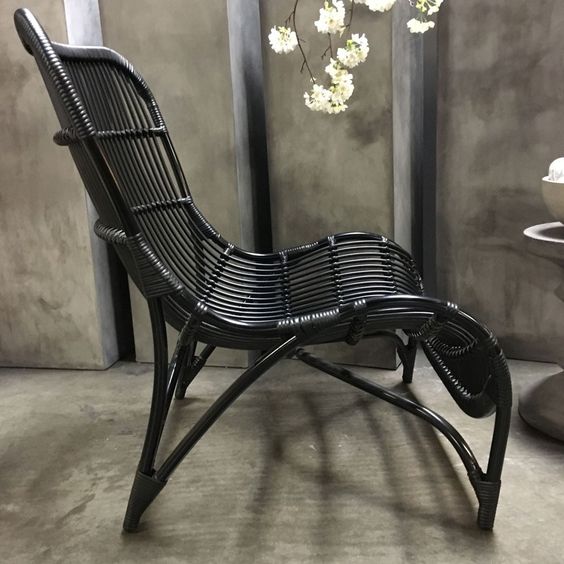Ah . . . the almighty pendant. Strong on its own, marvelous in a group, it plays well with others, serving its own purpose and distinction in a space already offering recessed or spot-lit sconce lighting. A single pendant in a bathroom can be surprisingly stunning, a series of pendants down a hallway is a solid middle finger to the tradition of modest, subtle flush-mount lighting, announcing “more is more, babe. live with it.” And because we’ve had a few clients over the years wonder about the vernacular of “pendant” versus ”chandelier,” here are the general contrasts between the two: while a pendant is a singular fixture hanging from a rod, cord, or chain, chandeliers are oftentimes hanging by a chain with a central body and varying branches extended from the main body; pendants can provide wonderful task lighting while chandeliers impart a more romantic glow (otherwise known as “mood lighting” rendering everyone’s skin flawless); there’s also a fairly strong price disparity between pendants and chandeliers, with pendants typically being less costly versus the larger dimensions, more expensive materials, and the cost of professional installation a big-ass, ornate chandelier can require.
Here’s a handful of pendant “rules” to play by:
1) In an entryway, a pendant should be hung approximately 7’ from the floor. (We’re not big fans of the word “should” in most contexts, but when you don’t want people walking into the bottom of a pendant light upon entering your home, I think “should” is appropriately used in guiding decision-making). Of course, if you’ve got a 30’ ceiling in your two-story foyer, the suggested 7’ guideline wouldn’t apply - in the grandiose, sweeping foyer scenario, we recommend splitting the vertical space into thirds and hanging the pendant 2/3 from the ground floor.
2) Over a dining table, the standard drop is anywhere from 28” - 36” between the bottom of the pendant and the dining table itself. Most common and a fairly safe guideline is to go with 30 inches. But if your ceilings are taller than 8 feet, you can easily keep 36” - 40” of space between the dining table and pendant and no one will rudely comment or quietly think you’re a weirdo.
3) Hanging multiple pendants over a kitchen island or dining table is a fabulous way to bring needed light into your space while also making a conscious design statement by way of the scale, shape, color, material, and style. Typically, they ought to be hung 24” - 30” apart from one another, so use that as a guideline to determine the number of pendants you’ll be hanging! ****For example, if your kitchen island is five feet long, two medium pendants (approximately 12”-16” diameter or thereabouts) should suffice. Find the island’s center point of 36” and hang the two beauts equidistant from one another (so let’s just say 15”- 18” each off the center point, depending upon if you want 30 or 36 inches of space between the pendants). Yes, it’s a bit of math, but mostly it’s math plus instinct (which I realize is more math) - the pendants need to relate to one another while not leaving too much unlit island on either side and not seeming mashed together like a codependent couple. Got it?
4) ALWAYS have dimmers connected to your pendants (and any hard-wired lighting in your kitchen, den, living room, TV room, library, or lounge, for that matter). It’s beyond worth the necessary additional costs during installation. Even if you want to save those extra bucks and you’re nearing your budget’s high-end or are over budget and having a meltdown, HAVE THOSE DIMMERS INSTALLED IN YOUR HOME’S COMMON AREAS. Not only will their addition monumentally improve the quality of your own life residing there, but dimmers increase the heck out of your home’s value, so it positively impacts your potential resale down the line. (You can thank us later.)
For awhile, it seemed like everyone and their second cousin twice removed had this IKEA pendant and I wouldn’t blame IKEA for never ever discontinuing the design because it’s GOOD (and less than $70, for heaven’s sake). We saw this dang pendant EVERYWHERE in Los Angeles and its common placement in restaurants, for example, belied its insanely low price point. The range of pendant designs is incredibly broad, from mid-century modern to bohemian to traditional, and the pricing is equally all over the place. The excellent news is this - you can get a DAMN FINE, sizable, beautiful pendant for less than $500 (and you don’t have to join the IKEA legions to do so).
More than half of the black and white pendants we’ve pulled together here fit that under-$500 niche - one is inspired by Japanese teapots, another inspired by an overturned water vessel, another made from two delicate tiers of bent bamboo slats (!!). In the realm of pendants, there’s certainly no shortage of Tom Dixon knock-offs, but we’re pretty much purists when it comes to George Nelson, and the older the better! For the purposes of this post, we’ve specifically opted for black and white pendants, but I’m 100% confident we can devote a future post to our favorite rattan, glass, and brass pendants, so stay tuned for a future pendant-love post!
1- Beat Light, $128 (franceandson) ; 2 - Milly +Eugene Lace Pendant, $229-$399 (millyandeugene.com) ; 3 - Nordlux Belly Pendant, $185 (lightsy.co.uk) ; 4 - Whitman Pendant, $598-$898 (serenaandlily.com) ; 5 - Rough Diamond Geometric Globe, $580 (1stdibs) ; 6- Powell Street Pendant, $596 (lumens.com)
1 - Ronde Pendant by Oliver Schick, $389-$619 (lumens.com) ; 2 - Aurora Dome Pendant, $189 (roomandboard.com) ; 3 - Jamie Young Tavern Pendant, $239 (onekingslane.com) ; 4 - George Nelson Ball Pendant, $395-$595 (ylighting.com) ; 5 - Limoges Pendant by Visual Comfort, $420-$548 (ylighting.com) ; 6 - Shae Pendant by Arteriors, $1350 (lumens.com)



































